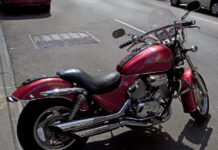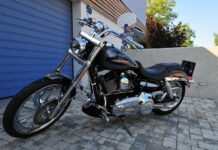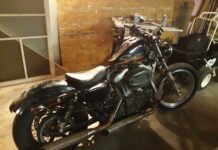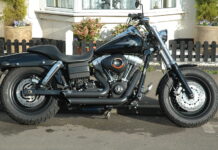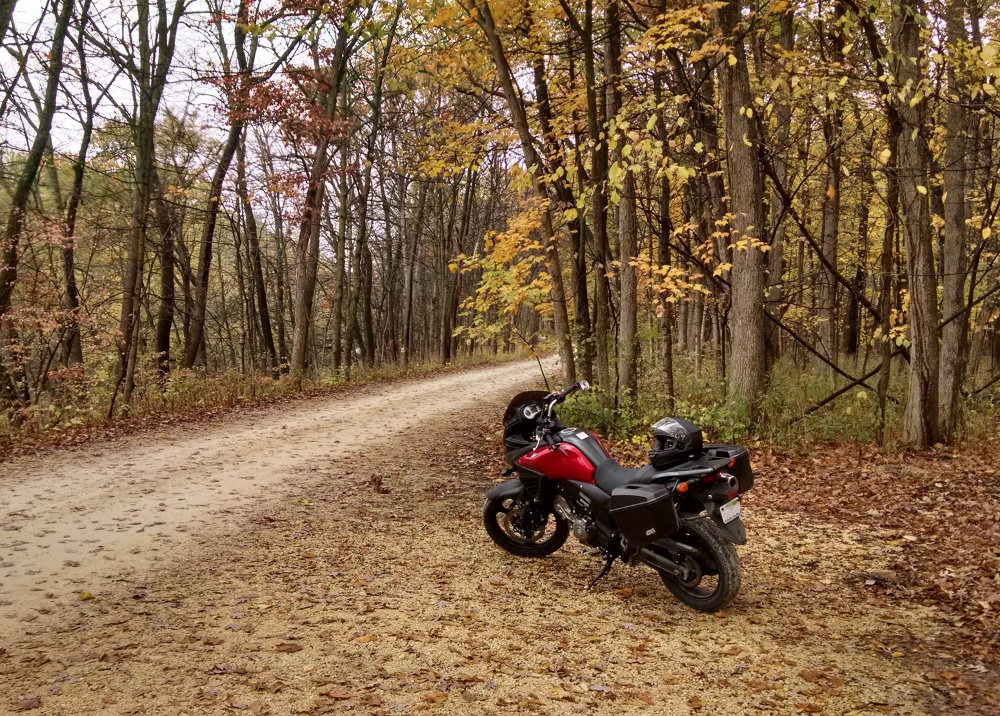
Question: What is the best motorcycle coolant to use? My bike has not had the coolant drained in the last two years. For my V-Strom, Suzuki recommends it be done at 2 years or 7,500 miles using the Suzuki Long Life Coolant.
- Extended life formulation 5 years/60,000 miles
- Better cooling performance
- Performance under extreme operating conditions -34º to 228ºF
- Pre-mixed DO NOT add water
- Contains NO silcate and borates
Affiliate links / Images from Amazon Product Advertising API
No products found.
- Specifically designed for motocross bikes, trail bikes, Enduro bikes, street bikes, quads, ATVs, UTVs and snowmobiles
- Has a boiling point of 375 Degree F and will not vaporize, eliminating boilover and after-boil Generates low vapor pressures, prevents coolant loss, and reduces strain on cooling system components
- Contains no water, effectively eliminating corrosion, liner and water pump cavitation erosion Minimizes the potential for corrosion and electrolysis issues, and reduces maintenance costs
- Used by race teams for years to keep their engines safe, no matter what the conditions
- During installation ensure that all of old water-based coolant and water is removed before installing this product
Affiliate links / Images from Amazon Product Advertising API
- Antifreeze Coolant - If your bike runs hot, you are not getting peak performance. With Liquid Performance Street Bike Coolant and Antifreeze, you won't have to worry about your bike overheating
- Reduces Heat - Reducing heat in the closed loop cooling system helps to maintain your bike’s optimum horsepower and engine life. Thanks to our propylene glycol antifreeze, it has a boiling point protection up to 260°F (126.6°C); freezing point protection down to -30°F (-34°C)
- Advanced Formula - The antifreeze is propylene glycol-based, phosphate-free, virtually non-toxic, and biodegradable
- The #1 Coolant On The Market - Our bike and motorcycle coolant was tested and dyno rated the #1 coolant on the market
- Made in the USA - All Liquid Performance Power Sports products are made right here in the USA with premium ingredients and quality formulas that are effective, and you can rely on
Affiliate links / Images from Amazon Product Advertising API
- ✅ PHOSPHATE FREE, RTU - Engine Ice Hi-Performance coolant is phosphate free and ready to use, reducing operating temperatures and effectively keeping boil over temperatures to 256 Fahrenheit or less and freeze-up protection to -7 Fahrenheit
- ✅ MAXIMIZE PERFORMANCE - With an average reduction in operating temperatures of 10 Fahrenheit - 20 Fahrenheit Engine Ice is perfect for the high-performance demands of your powersports vehicle.
- ✅ EASY TO USE - Engine Ice Hi-Performance Motorcycle Coolant + Antifreeze provides superior head dispersion allowing you to maximize horsepower and performance. Easy to Use – Premixed with deionized water for out-of-the-bottle use.
- ✅ STOP LOSING PERFORMANCE - Engineered to keep your operating temperatures at optimum performance to not lose power through excess heat; Engine Ice is safe for vehicles over all types of terrain and offers superior heat reduction vs. competitive products as shown in independent lab testing.
- ✅ ADVANCED FORMULATION WITH OAT TECHNOLOGY - Product contains no ethylene glycol, uses propylene glycol to reduce operating temperatures more than other coolants
Affiliate links / Images from Amazon Product Advertising API
- Premixed with pure, deionized water for optimum performance and convenience
- Enables maximum horsepower by controlling engine temperatures
- Advanced formulation protects against rust, corrosion and cavitation
- Nitrate, amine and borax free!
- 100% biodegradable in unused form
Affiliate links / Images from Amazon Product Advertising API
Guide to buying motorcycle coolant
Most bikes that were manufactured in the past two decades are liquid cooled. However, some motorcycles were built with air-cooled engines — such as older Harley-Davidson motorcycles.
Newer HDs like the Pan America, V-Rod, Sportster, etc have liquid cooling. The best coolant for Harley Davidson motorcycles that require antifreeze is what HD recommends in the owner’s manual.
What Coolant Does?
Anti-freeze, also known as coolant or radiator fluid, is used to manage the engine’s heat level. Engines can run very hot. It’s important to ensure that it’s neither too hot or too cool.
The coolant operates using heat transfer. The heat from the engine will transfer to the coolant. Then, it travels through the radiator which utilizes airflow to then cool the coolant.
This will repeat in cycles as you’re riding. Whenever your bike is on and not in motion, your radiator has built-in fans to aid air circulation.
Coolant offers many benefits. They help maintain the engine and lead to longer-lasting strong performance. It allows you to more precisely maintain the heat of your engine.
Pre-Mixing?
Coolant will either come mixed or pre-mixed. All this really means is that it’s been mixed with water. Pre-mixed typically comes at a higher price and the difference being is that it includes water already.
Otherwise, you can easily mix it yourself. You just have to mix an equal amount of coolant with distilled water.
Does it matter what brand of coolant I use?
There are typically two forms of motorcycle coolant, which are ethylene glycol and propylene glycol. What’s good about coolant is that each kind will be a different color to make it easier for you to identify.
Remember, it’s never a good idea to mix the two kinds of coolant. This can cause your motorcycle to not operate properly.
It’s recommended to buy coolant that is free of phosphates or silicates. You also don’t want any nitrates in it. These are used to form a layer of insulation in your motorcycle’s cooling system.
Propylene glycol is generally recommended for most motorcycles. It is safer to use as it is not poisonous for humans or pets if consumed.
You don’t want to use coolants with these substances in older engines. Those compounds more often work against heat transfer.
Without regular maintenance, the coolant’s chemical makeup can break apart as that layer of silicates and phosphates deteriorates.
Also, that layer can become so thick to the point where heat won’t be able to transfer efficiently within your bike’s engine. This can lead to overheating.
Additionally, phosphates and silicates can cause issues of wear and tear to water pump seals.
It’s a good idea to ensure that you purchase coolant that is aluminum-safe. Motorcycle radiators are often constructed with aluminum.
When Should You Change Your Coolant?
Coolant should be changed when your bike manufacturer indicates so.
Don’t forget, using unclean water can cause impurities to build up in your coolant system. This can lead to more necessary coolant changes and bike maintenance.
Some bikes can get away with changing the coolant every few years like my Suzuki.
Another significant factor is how often you ride. The less you ride the less frequently you need to change your coolant.
If you’re unsure of what kind of coolant is in your bike, you can easily flush your coolant system. Then, refill it with the coolant recommended in your owner’s manual.
Can Prestone coolant be used in motorcycle?
I have used it in two Hondas — A 1997 Honda Valkyrie and a 1985 Honda Magna. Both require the green anti-freeze and worked well with off-the-shelf-parts-store antifreeze, such as Prestone.
Owner’s Manual
Your owner’s manual should be able to tell you what kind of coolant you should be using with your bike. The needs of each bike may be different and this will be reflected in the manual.
You can also do research online or consult your local motorcycle mechanic to ensure you’re purchasing the right product.
Find good motorcycle antifreeze on Amazon.
Originally posted 2023-01-06 16:08:31.

